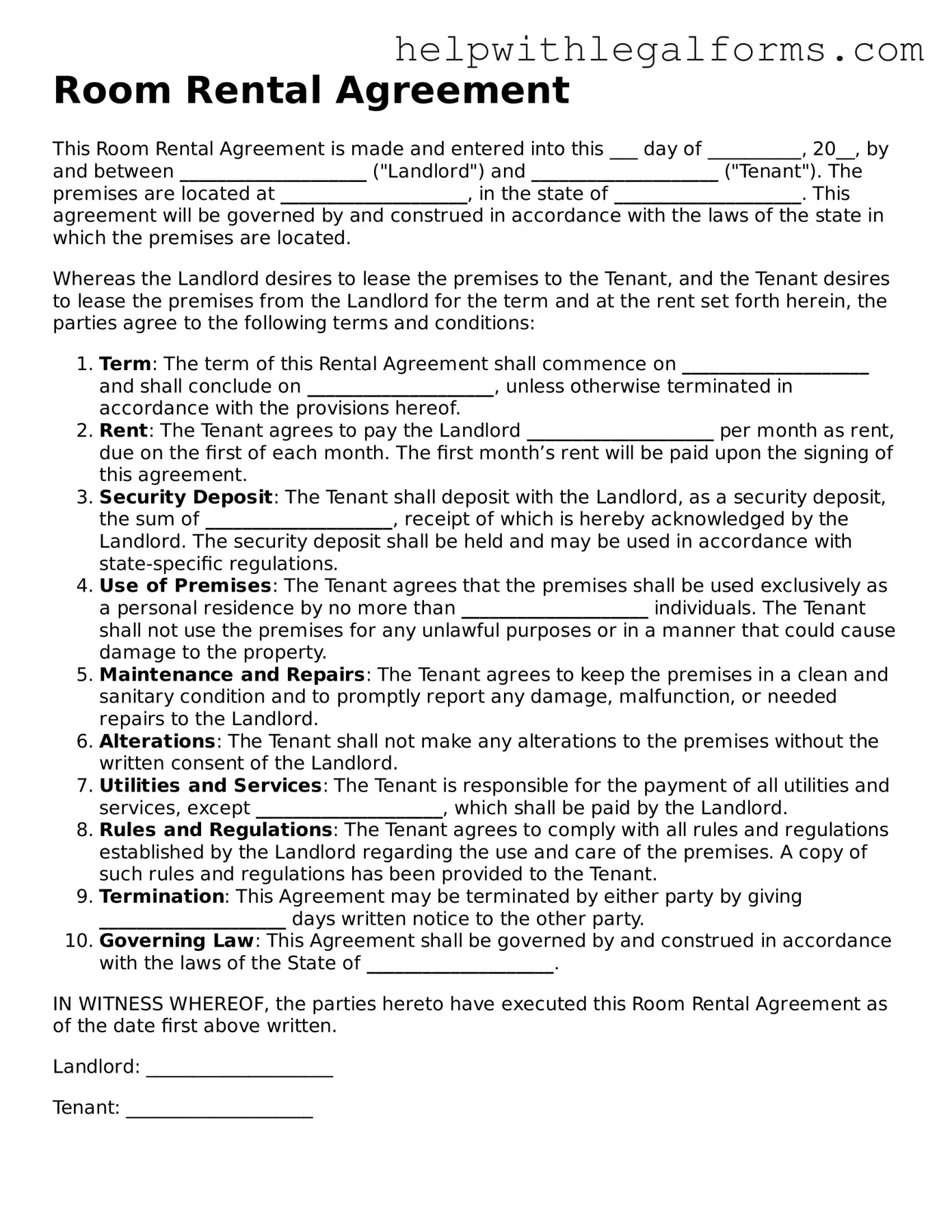Room Rental Agreement
This Room Rental Agreement is made and entered into this ___ day of __________, 20__, by and between ____________________ ("Landlord") and ____________________ ("Tenant"). The premises are located at ____________________, in the state of ____________________. This agreement will be governed by and construed in accordance with the laws of the state in which the premises are located.
Whereas the Landlord desires to lease the premises to the Tenant, and the Tenant desires to lease the premises from the Landlord for the term and at the rent set forth herein, the parties agree to the following terms and conditions:
- Term: The term of this Rental Agreement shall commence on ____________________ and shall conclude on ____________________, unless otherwise terminated in accordance with the provisions hereof.
- Rent: The Tenant agrees to pay the Landlord ____________________ per month as rent, due on the first of each month. The first month’s rent will be paid upon the signing of this agreement.
- Security Deposit: The Tenant shall deposit with the Landlord, as a security deposit, the sum of ____________________, receipt of which is hereby acknowledged by the Landlord. The security deposit shall be held and may be used in accordance with state-specific regulations.
- Use of Premises: The Tenant agrees that the premises shall be used exclusively as a personal residence by no more than ____________________ individuals. The Tenant shall not use the premises for any unlawful purposes or in a manner that could cause damage to the property.
- Maintenance and Repairs: The Tenant agrees to keep the premises in a clean and sanitary condition and to promptly report any damage, malfunction, or needed repairs to the Landlord.
- Alterations: The Tenant shall not make any alterations to the premises without the written consent of the Landlord.
- Utilities and Services: The Tenant is responsible for the payment of all utilities and services, except ____________________, which shall be paid by the Landlord.
- Rules and Regulations: The Tenant agrees to comply with all rules and regulations established by the Landlord regarding the use and care of the premises. A copy of such rules and regulations has been provided to the Tenant.
- Termination: This Agreement may be terminated by either party by giving ____________________ days written notice to the other party.
- Governing Law: This Agreement shall be governed by and construed in accordance with the laws of the State of ____________________.
IN WITNESS WHEREOF, the parties hereto have executed this Room Rental Agreement as of the date first above written.
Landlord: ____________________
Tenant: ____________________
